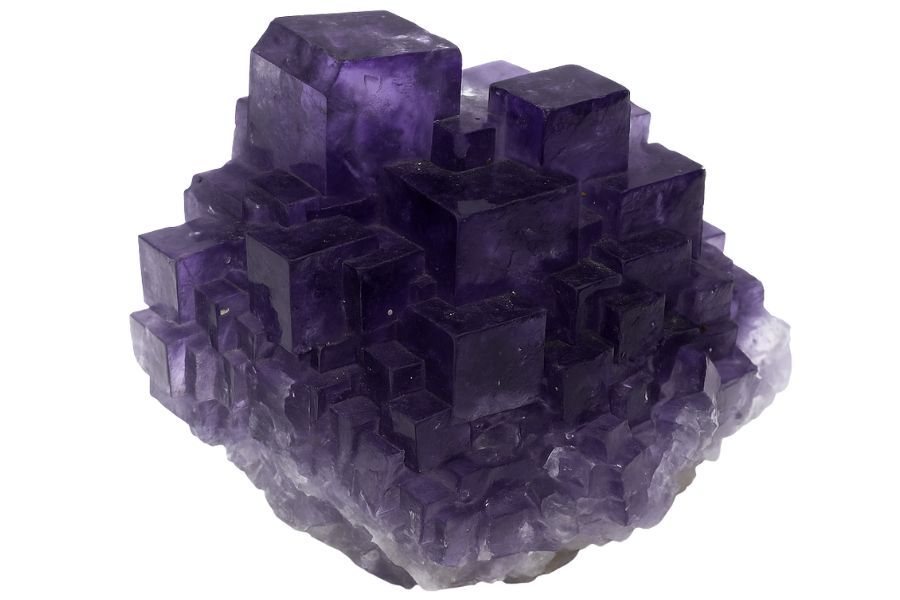Looking for gemstones in Kentucky can turn any day outdoors into a rewarding adventure. Streams, hillsides, and weathered outcrops all hold the potential for something worth keeping.
You’ll find that time and patience matter just as much as luck. The most exciting part is that Kentucky hides a surprising variety of gems beneath its soil, each with its own story to tell.
We’ll help you uncover the best places to search and what to keep an eye out for. Knowing what you’re looking at, and where to look, can mean going home with a whole range of gemstones that reflect the state’s rich terrain.
- The extensive local experience and understanding of our team
- Input from several gem hunting groups and organizations
- The accessibility of the mining locations
- Safety and potential hazards when collecting
- Private and public locations
- A desire to include locations for both experienced gem hunters and those who are just starting out
Overall we’ve been able to put together a great list that anyone can use to locate a lot of beautiful gems.
The Gemstones Found In Kentucky You Can Mine
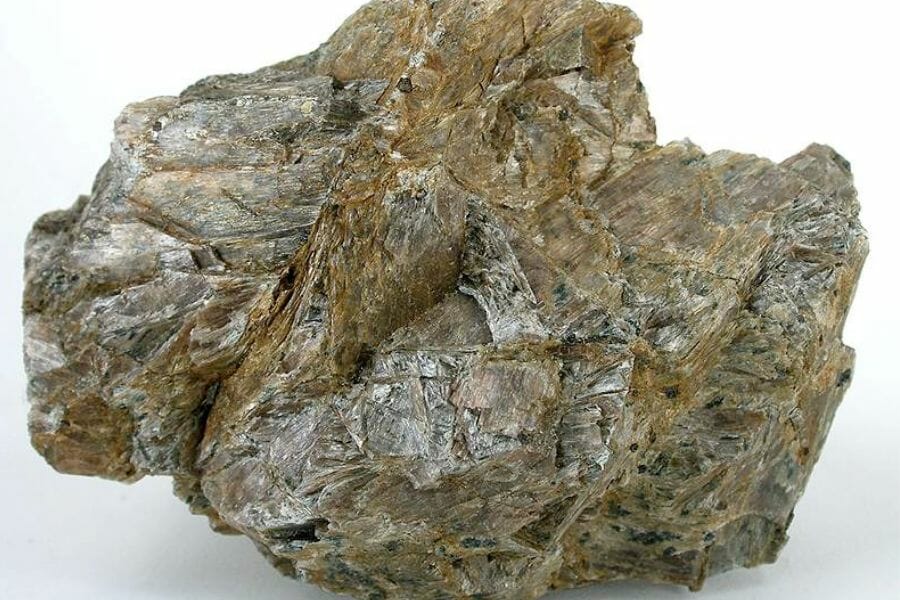
Kentucky is undoubtedly filled with a wealth of undiscovered gemstones. We’ll share some of the best locations that we suggest you try for an unforgettable gem hunting adventure! We’ve also created several guides to assist you in finding gem mines near you, no matter where you are. You’ll see how rewarding hunting for gems can be with the correct knowledge and a little luck!
Kentucky Agate
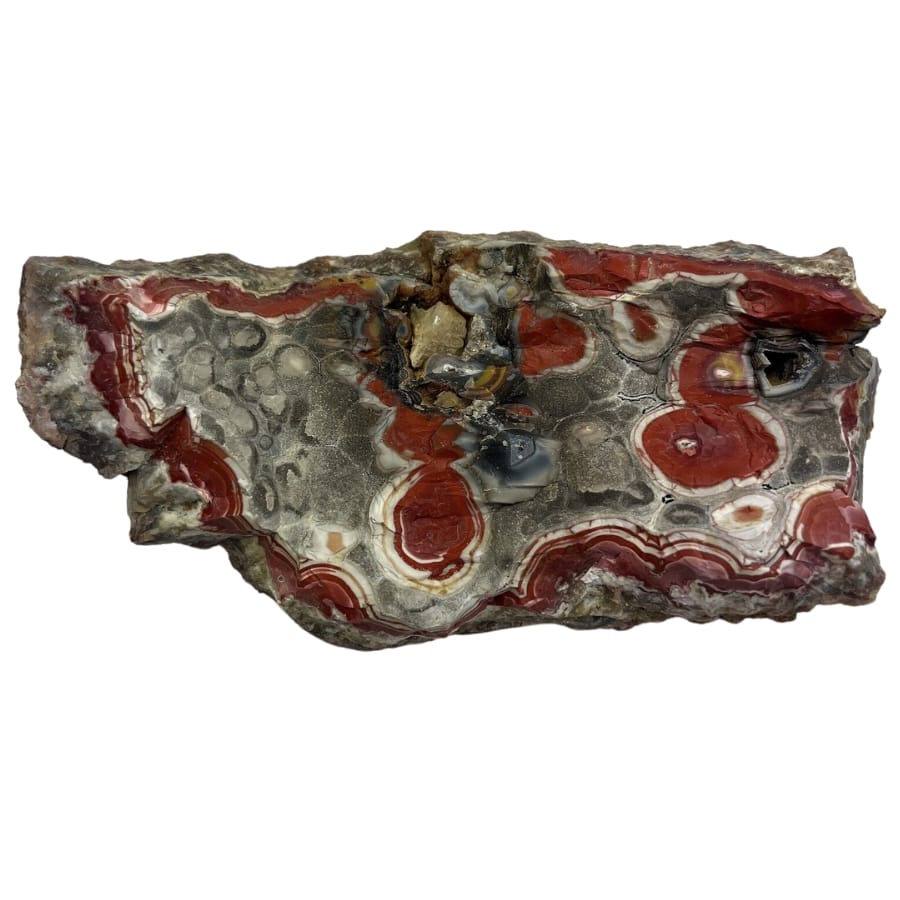
Kentucky agate is a really special kind of stone that’s found, you guessed it, mainly in Kentucky! It’s the state rock of Kentucky. What makes it stand out are its stunning colors and patterns.
It usually has layers of different colors like red, black, yellow, and white, all swirled together in beautiful, natural designs. Each piece is unique, making it a real treasure for anyone who finds it.
The name “agate” comes from the ancient Greek word “Agate?” which referred to a stone found in a river in Sicily. Kentucky agate formed millions of years ago during the Mississippian period.
It’s created when silica from volcanic activity gets deposited in rock cracks and spaces. Over time, this silica turns into agate, layer by layer.
People value Kentucky agate for several reasons. Its beautiful, unique patterns make it a favorite among collectors and artists. It’s often cut and polished to make jewelry like pendants, earrings, and rings.
Kentucky agate is also popular among locals and visitors who enjoy hunting for it as a hobby.
Where you can find Kentucky Agate in Kentucky
You can find Kentucky agate in the eastern part of the state, especially around the Red River Gorge and Kentucky River.
Freshwater Pearls
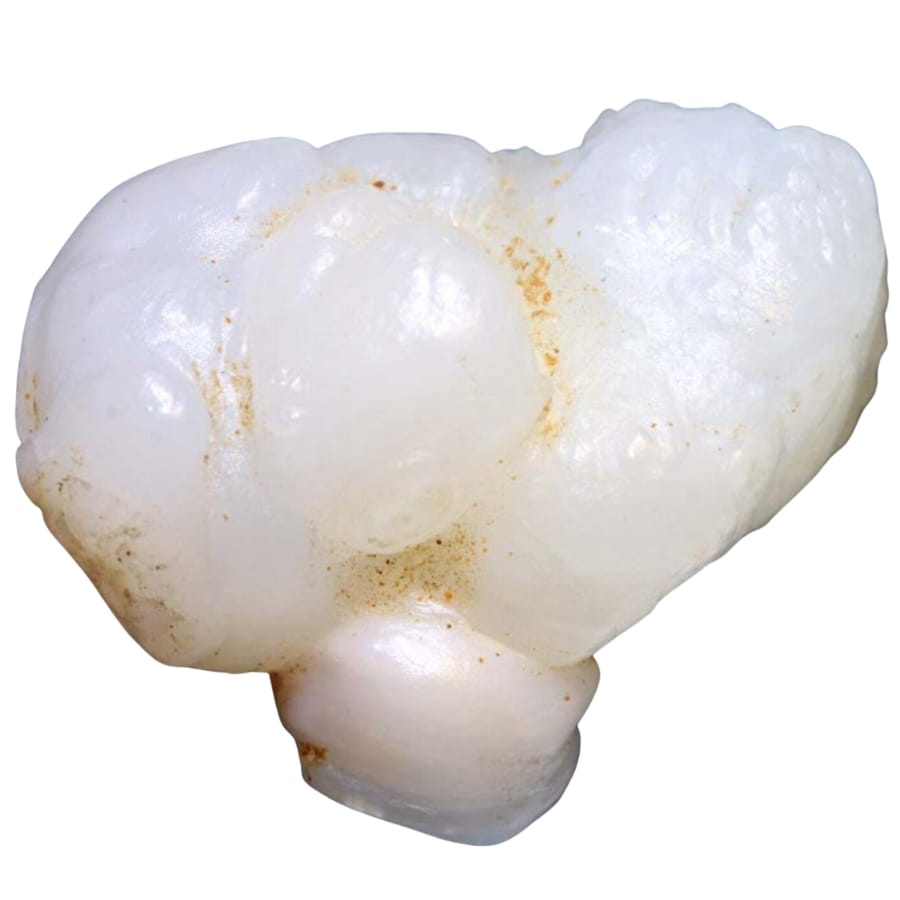
Freshwater pearls are bright and beautiful gems from mussels that live in rivers and lakes instead of the ocean. Mussels are like clams. Some of these pearls are purple, some are pink, and some are white. They’re not always round, though.
The word “pearl” comes from the old French word “perle,” which in turn comes from the Latin word “perna,” which means “leg.” This refers to the piece of the mussel shell that looks like legs.
When a tiny piece of sand or something else small gets inside the mussel’s shell, it turns into a pearl. Nacre is a shiny material that the mussel covers this little irritant with. This builds up over time to form a pearl.
Freshwater pearls have been loved for a long time because they are pretty and one-of-a-kind. They are used to make chains, bracelets, earrings, and other jewelry.
People often think of pearls as signs of beauty and class, usually worn at weddings and other special events. They also don’t need to be cut or cleaned to look beautiful.
Where you can find Freshwater Pearls in Kentucky
You can mostly find freshwater pearls in the following locations in the state:
- Mississippi River Valley
- Tennessee River Valley
Celestite
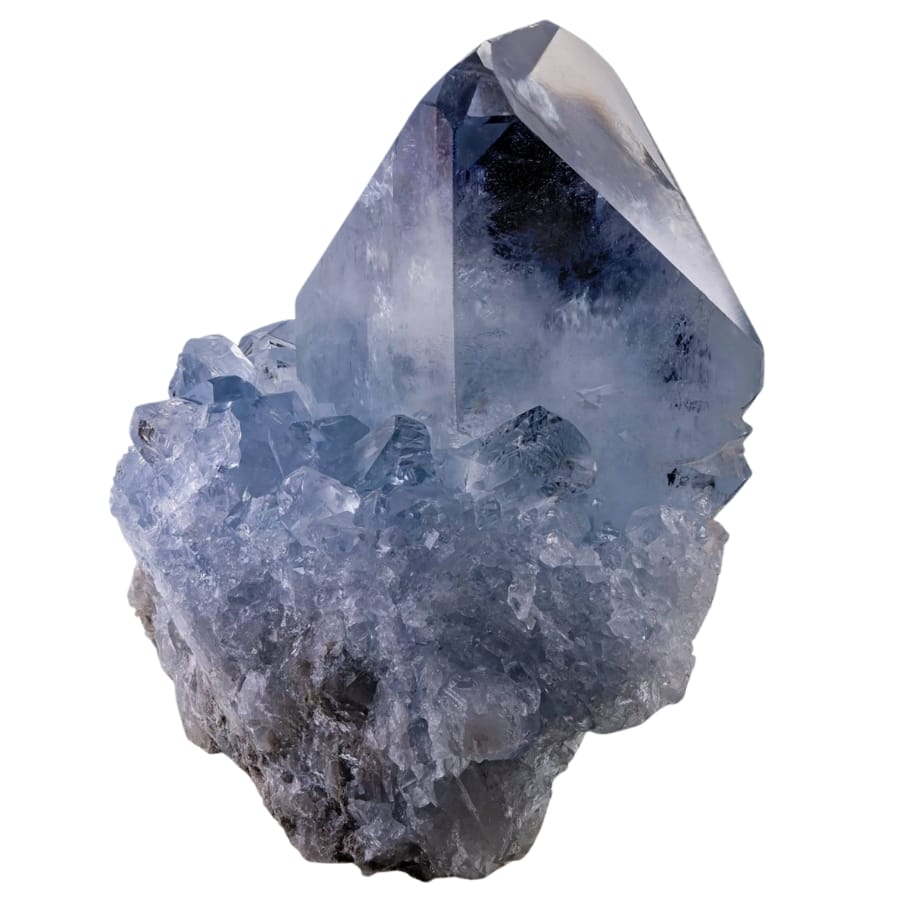
Celestite is a lovely crystal that gets its name from the pretty blue color it has, which can be light to sky blue. It can also be clear, white, or even pale pink sometimes.
It’s made up of crystals that can be very big and look like glass. Under ultraviolet light, celestite glows with a soft light that makes it look even more magical.
The word “celestite” comes from the Latin word “caelestis,” which means “heavenly.” The name comes from the color, which is very blue and makes people think of the sky.
It’s found in sedimentary rocks, most often in places with lots of fossils. If sea water evaporates, it can also form. Because of this, it’s often found in salt mines and near hot springs.
The beautiful blue color of celestite is what draws people to it. It’s often put in jewelry and used as a home art item. Cerise is used to make fireworks, as well as being pretty.
Strontium, which is found in the element, helps fireworks shows make bright red colors. Celestite isn’t as common as some other crystals, but people love it because of its unique color and many uses.
Where you can find Celestite in Kentucky
In Kentucky, you can find celestite at these places:
- Halls Gap
- Kings Mountain
Fluorite
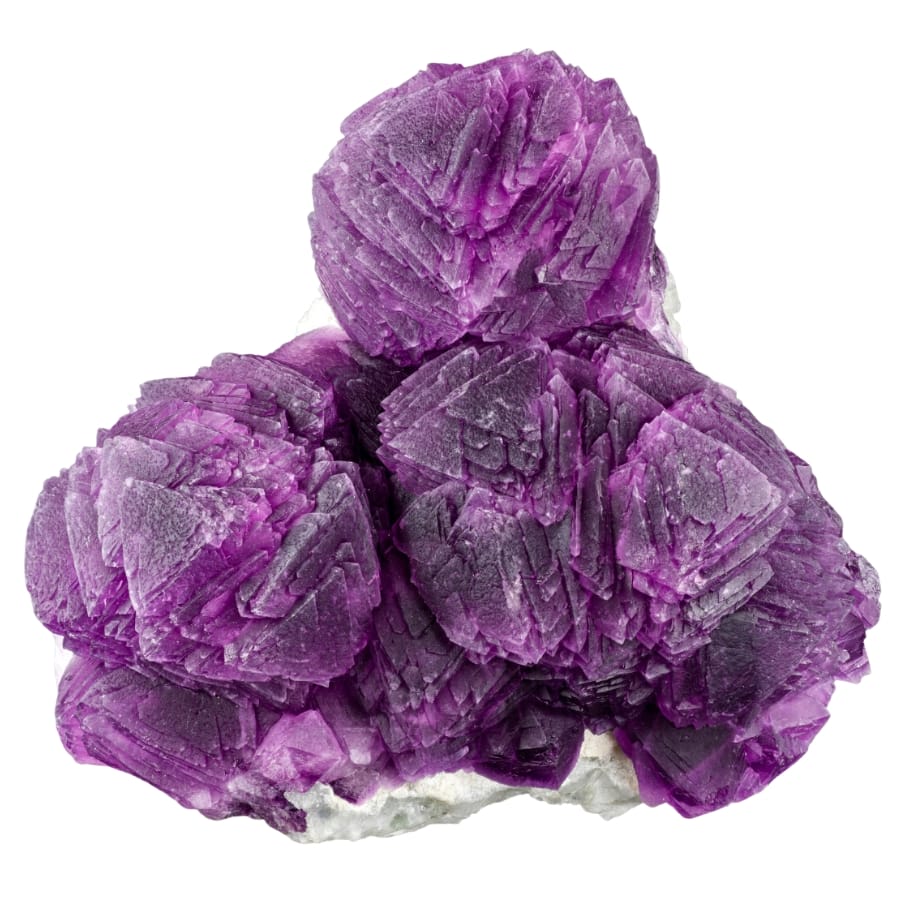
Fluorite is a cool element that stands out because it comes in so many colors. One gem can be purple, green, blue, yellow, or even a mix of these colors!
When it forms, it often does so in cubes or other geometric shapes. Its surface is shiny and looks like glass. Under UV light, this mineral can glow, making it look lit up from the inside.
“Fluorite” comes from the Latin word “fluere,” which means “to flow.” This name was chosen because fluorite makes metals by lowering their melting point. This makes the metal move better.
It forms in deep underground places with a lot of heat and pressure, like near volcanoes. It can also be found in rocks warmed by the sun.
Fluorite has been valued for a long time, both for its beauty and for its useful properties. People like to wear and collect it because of its bright colors and clear diamonds.
Because it helps focus light so well, it is also used to make camera and binocular lenses. It turns out that fluorite is more than just a pretty stone; it’s also useful in science and making things.
Where you can find Fluorite in Kentucky:
Fluorite is abundant in Kentucky, notably in the following areas:
- Ellis Mine
- Gratz Mine
- Morton Branch
- Ohio River
- Pygmy Fluorspar Mine
Pyrite
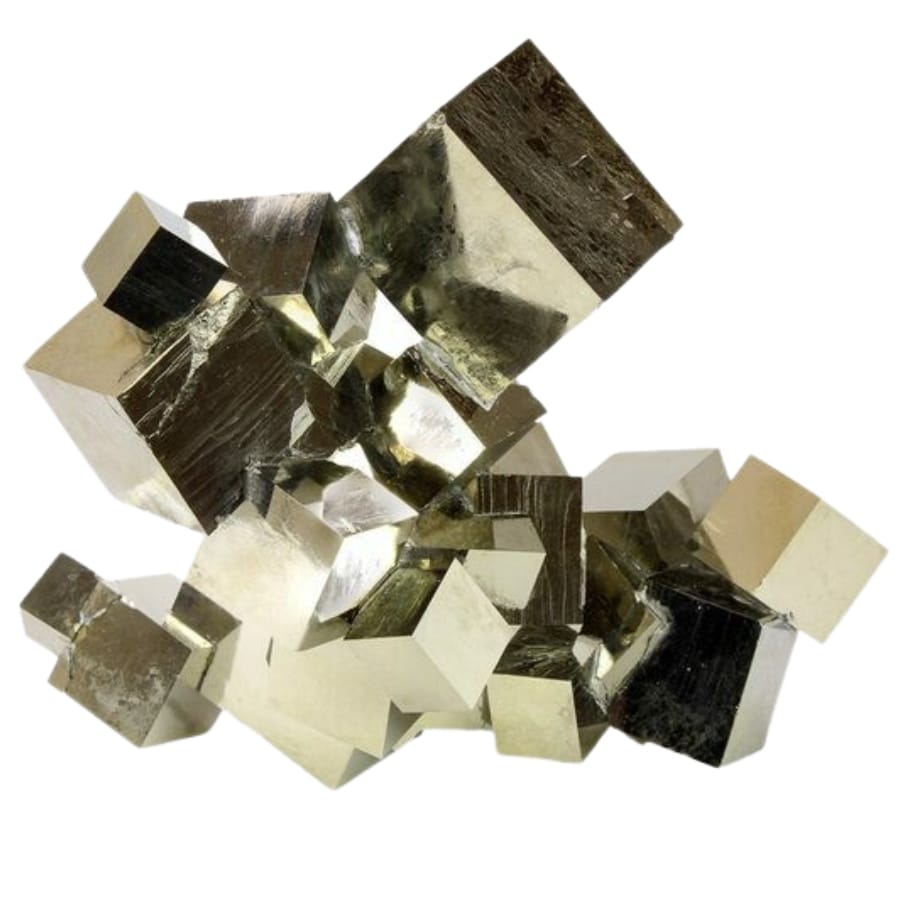
Pyrite is a fascinating mineral that is sometimes called “fool’s gold” because it looks a lot like real gold. It’s a brassy yellow color and comes in cool shapes like spheres and cubes.
Most of the time, it’s easy to tell apart from real gold because it’s harder and lighter. Plus, it’s less strong than gold, so it breaks more easily.
“Pyrite” comes from the Greek word “pyr,” which means “fire.” The reason for this is that it can spark when it hits metal or another hard substance. There are different ways that it can form.
It can be found in sedimentary rocks like shale, where it comes from organic matter breaking down. Iron-rich rocks, like granite, and rocks that have been changed by heat and pressure are also places where pyrite can be found.
Pyrite has been valuable to people for a very long time. It’s still very valuable even though it’s not gold. Sulfuric acid is important in many industrial processes and is made from pyrite. Paper, rubber, and paint are all also made from it.
Besides its useful properties, it’s a popular crystal among mineral collectors because it looks cool and shiny. People also use it to make jewelry and decorate their homes.
It adds a little sparkle to everything from statues to earrings. Pyrite is a pretty cool material that can be used for many things, even though it’s not real gold.
Where you can find Pyrite in Kentucky
It’s easy to find it in the state, especially in these areas:
- Ohio River
- Old Jim Mine
- Pygmy Fluorspar Mine
Smithsonite
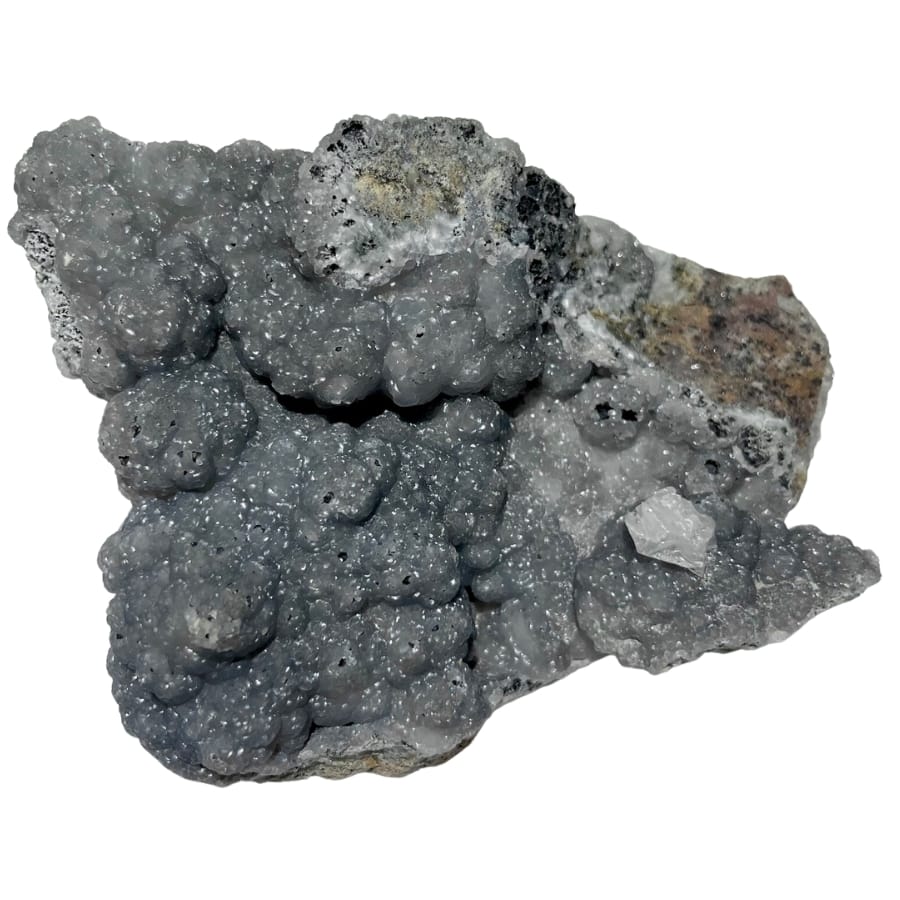
Smithsonite is a one-of-a-kind crystal with a smooth surface that can be blue, green, pink, or even colorless. It looks very pretty because it often looks like pearls or glass. It can also take on interesting shapes.
It often comes in round or botryoidal forms, which make it look like a bunch of grapes.
A scientist named James Smithson started the Smithsonian Institution, and the name “smithsonite” was given to honor him. It’s found on top of zinc ore reserves.
It’s made when zinc comes in contact with carbon dioxide in water and the air. It’s called “weathering,” turning the zinc rock into smithsonite. Some of the best places to find it are where metals like zinc have been mined.
There are several reasons why people like smithsonite. Mineral fans like it because it comes in many colors and has a shiny surface. It’s not usually used to make jewelry because it’s very soft and easy to scratch, but people still love its beauty.
It’s useful in mining and makes nice things to collect. Zinc can be found there, and zinc is a metal used to make alloys, coils, and batteries.
Where you can find Smithsonite in Kentucky
You can locate smithsonite in these parts of the state:
- Big Four Fault
- Columbia Mine
- Hickory Cane Mine
- Old Jim Mine
Cerussite
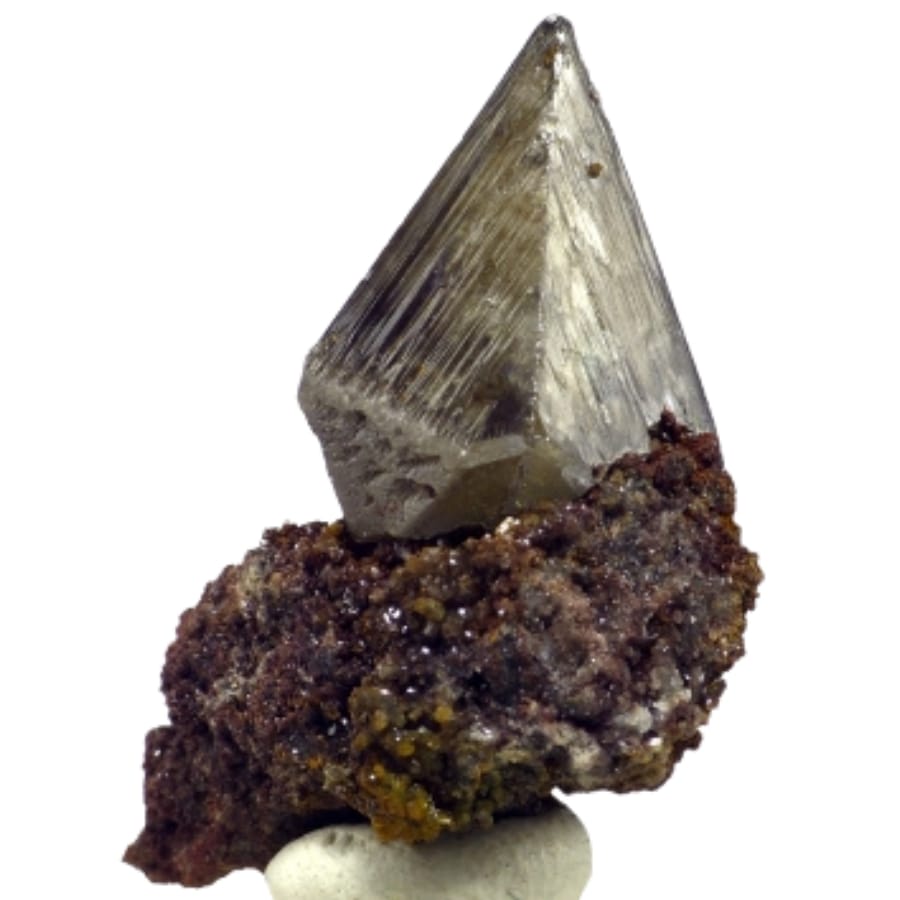
Cerussite is a special and interesting mineral that looks like shimmering diamonds. The most common colors are white, gray, and light blue.
It shines like tiny gems when it reflects light, which is one of its coolest features. It usually turns into crystals that look like glass, and these crystals can be very fragile.
The word “cerussite” comes from the Latin word “cerussa,” which means “white lead.” This name makes a lot of sense since cerussite is a lead rock with a lot of lead.
It’s made up of galena, another type of lead material. Once galena is out in the air with oxygen, it changes over time and turns into cerussite. Usually, cerussite is found at the top of lead ore layers. This is where air can reach it and change it.
The stone cerussite is very pretty, but it’s not often used in jewelry because it breaks a lot. Gemstone lovers still like it because they like the way it looks and sparkles.
Aside from being interesting to collectors, cerussite is useful in the mining business. Lead is a useful metal that is used to make shields against radiation, batteries, and even houses. Even though you might not see cerussite in a ring or chain, it’s a very important metal-making part.
Where you can find Cerussite in Kentucky
You can find cerussite in the following places across the state:
- Big Four Fault
- Columbia Mine
- Halls Gap
- Hickory Cane Mine
Chalcedony
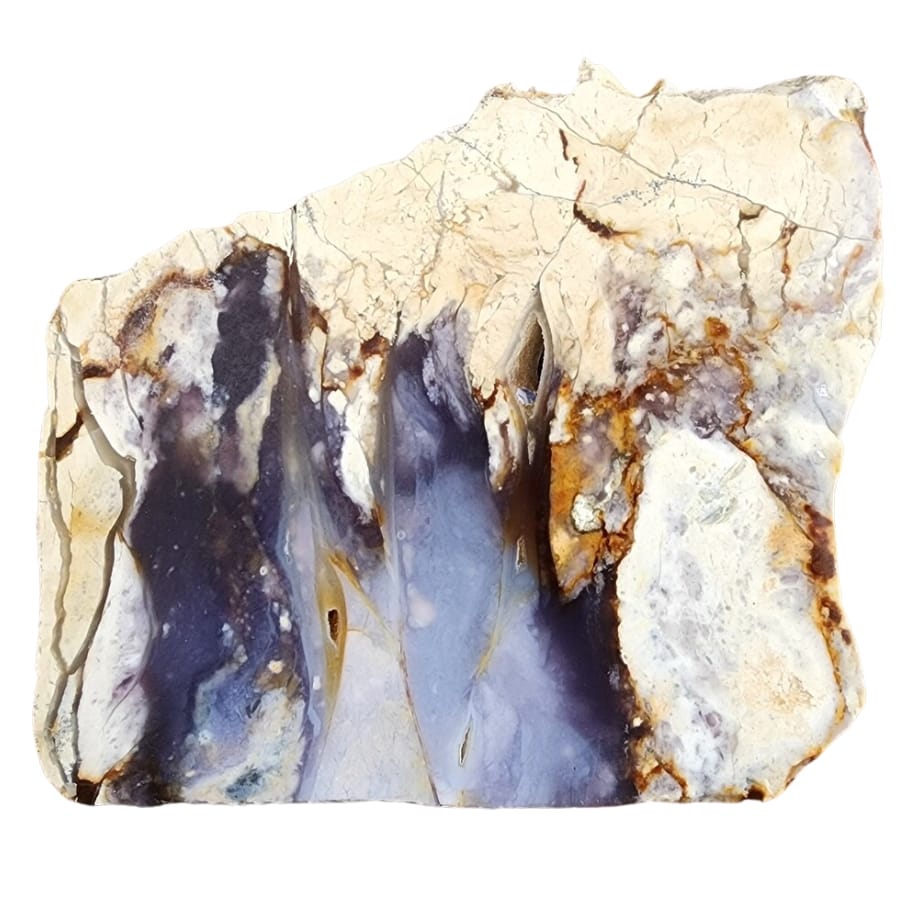
Chalcedony is a fascinating gemstone that is related to quartz. It stands out because it has a shiny sheen and comes in many colors, such as blue, pink, red, and green.
Instead of being clear like quartz, chalcedony looks more dense or slightly see-through, making it harder to see through. It’s made up of very small crystals that you can’t even see with your eyes. This makes it smooth and almost creamy.
The name “chalcedony” comes from a cool story. It’s thought to have come from Chalcedon, a Turkish town from long ago. People have known about and used this stone for a very long time, even in the past.
Over the years, chalcedony has been valuable for many reasons. A lot of people use it to make jewelry because it can be cut and shaped into pretty patterns, and it comes in a lot of different colors.
It has been carved and used to make trinkets and jewelry because it’s not too hard to work with but still strong. In the past, people even made tools and weapons out of it.
Where you can find Chalcedony in Kentucky
Chacledony can be found in the following places across the state:
- Halls Gap
- Mayfield area clay pits
Garnet
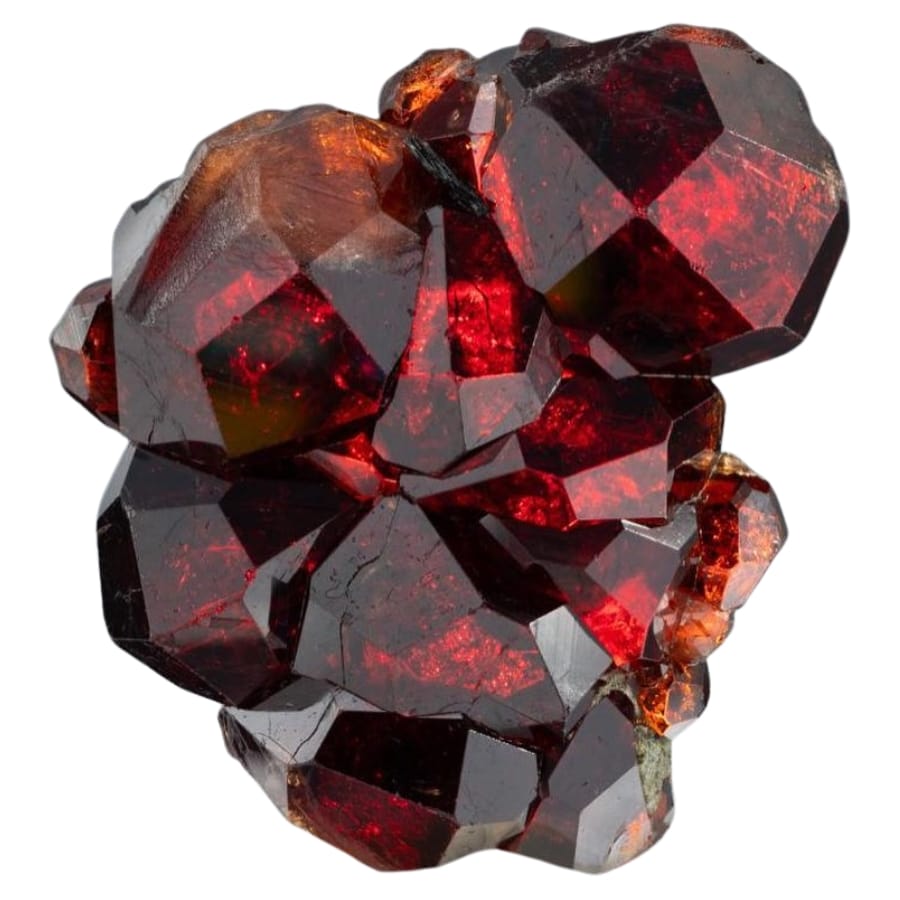
Garnet is an interesting rock that is usually a deep red color. However, it can also be green, orange, or even purple. The unique thing about garnet is that it shines like glass and sparkles when light hits it.
It’s common to find these gems in small, round crystals. They are pretty hard, so they don’t scratch easily.
“Garnet” comes from the Latin word “granatum,” which means “pomegranate.” This is because red garnets look a lot like the seeds of a pomegranate. It can form in a number of different natural situations.
Most of the time, it’s found in metamorphic rocks, which are rocks that have been changed by very high temperatures and pressures deep inside the Earth.
It can also be found in igneous rocks, which are made from lava that has cooled, and sedimentary rocks, which are made from sand, mud, and other things that have been pressed together.
Garnets have been valuable to people for a long time, not just because they are pretty. They’re often used to make rings, bracelets, and earrings because they look good and last a long time.
They are also very useful in other ways. In the workplace, they are used as abrasives, like in waterjet cutting and as sandpaper.
Where you can find Garnet in Kentucky
The following places in the state are where you can find garnets:
- Cold River Mining
- Ison Creek
- Little Sandy River
- Mount Vernon
Jasper
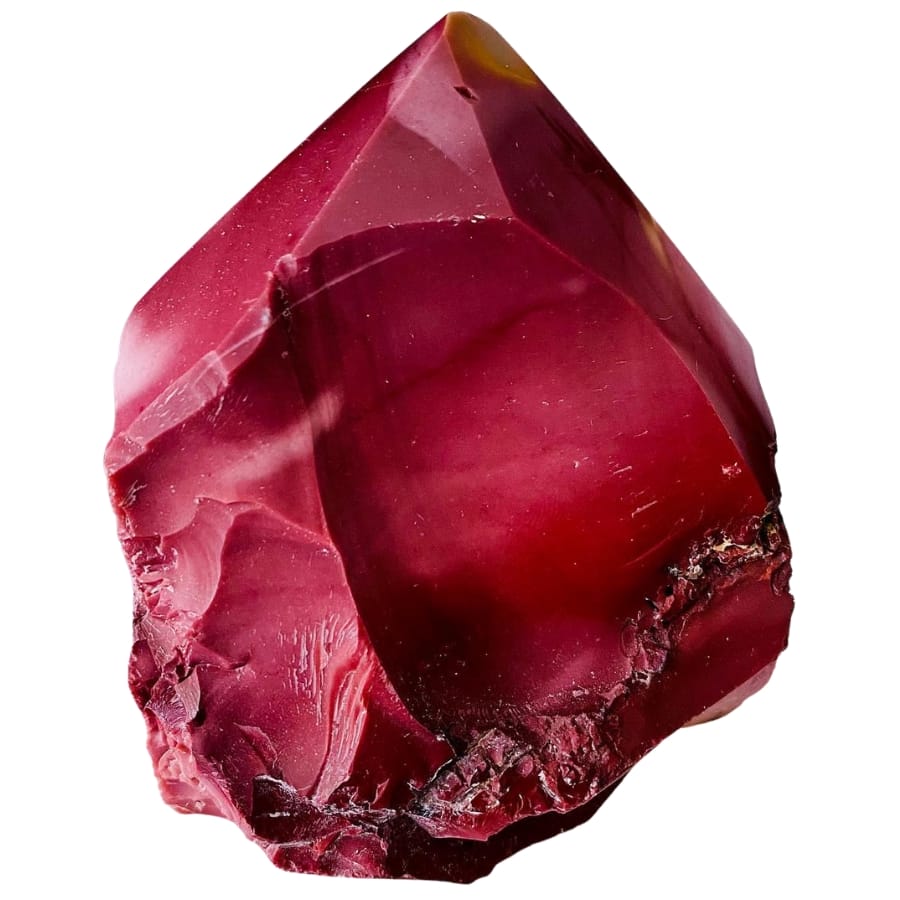
The beautiful colors and shapes of jasper make it a very interesting rock. Usually, people see it in red, brown, yellow, or green.
Amazingly, every piece is different; each has its own shapes, lines, or spots. It’s a kind of quartz, but unlike the clear, sparkly quartz crystals you might have seen, jasper is opaque, which means you can’t see through it.
One Greek word for “jasper” means “spotted stone.” When you see all the different patterns, this makes a lot of sense. Some types of material, such as mud, sand, and small rocks, stick together over time and turn into jasper.
Some places in the world where it can be found have had volcanic action.
For a long time, people have loved jasper because it’s both pretty and strong. Because it can be carved into different shapes and polished to a nice shine, it has been used to make necklaces and bands.
But jasper isn’t just used to make things look good. People used to make weapons and tools out of jasper because it’s so strong. It’s still used a lot for cutting and making crafts today.
Where you can find Jasper in Kentucky
These places in the state have jasper minerals:
- Hays Crossing
- Kentucky Lake
- Mount Vernon
- Wickliffe area
Quartz
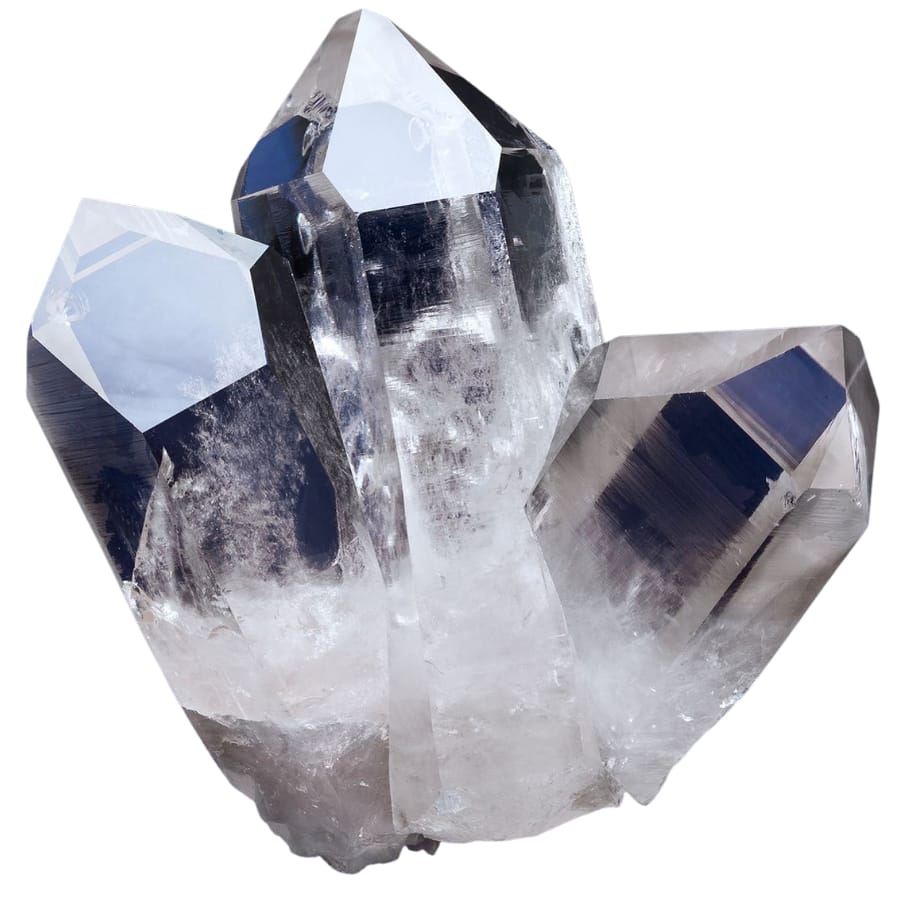
Quartz is a very interesting material that is found all over the world and is very well known for it. It’s known for being very hard and clear, but quartz can be many colors, including pink (rose quartz), purple (amethyst), and even black (smoky quartz).
Most quartz crystals have six sides, and they come in a wide range of sizes, from very small bits to big crystals that you can hold in your hand.
The word “quartz” comes from a German word, but no one is sure where it came from. Some people think it might have something to do with the German word “quarz,” which means “hard.”
Solids that are high in silica cool down and make quartz deep in the Earth’s crust. It’s also in metamorphic rocks, which have been changed by heat and pressure, and in sedimentary rocks, like sandstone.
Quartz is worth a lot because it’s often used to make jewelry and home decor like statues and vases. It’s also used to make watches and clocks because it helps keep time accurately.
Due to its ability to send and receive electricity, it’s found in radios, sensors, and even computer chips. It’s also an important part of many modern technologies!
Where you can find Quartz in Kentucky
You can find a lot of quartz in Kentucky in places like these:
- Big Four Fault
- Dyer Hill Fluorspar Mine
- Ellis Mine
- Kings Mountain
- Morton Branch
Our Favorite Places For Gem Mining in Kentucky
We’re going to give you our favorites first! When it comes to getting your hands dirty and finding gems these are the spots to try first. You can also check out the best options to find Kentucky geodes here if that’s what you’re after.
Always Confirm Access and Collection Rules!
Before heading out to any of the locations on our list you need to confirm access requirements and collection rules for both public and private locations directly with the location. We haven’t personally verified every location and the access requirements and collection rules often change without notice.
Many of the locations we mention will not allow collecting but are still great places for those who love to find beautiful rocks and minerals in the wild without keeping them. We also can’t guarantee you will find anything in these locations since they are constantly changing.
Always get updated information directly from the source ahead of time to ensure responsible rockhounding. If you want even more current options it’s always a good idea to contact local rock and mineral clubs and groups
Hickory Cane Mine
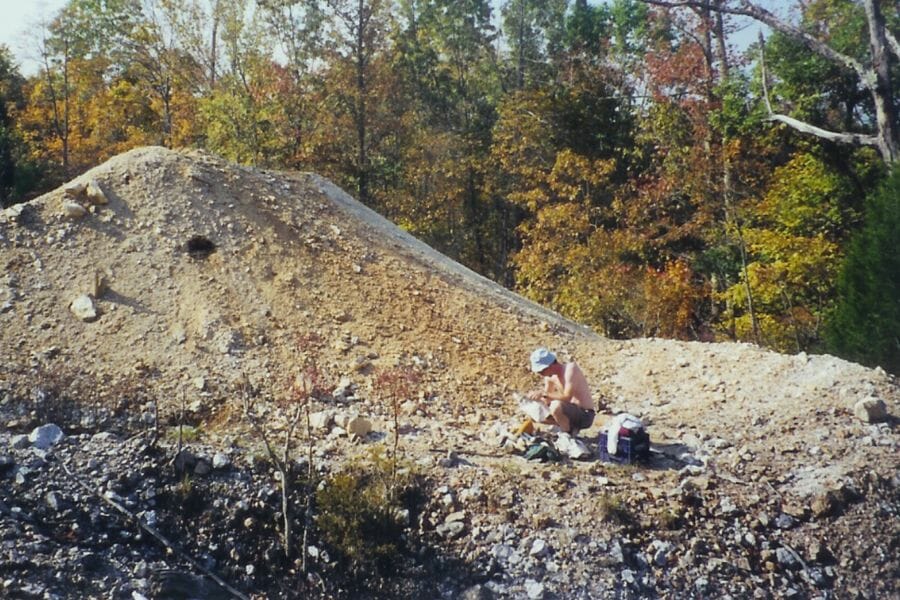
Marion, Crittenden Co., KY 42064, United States
Hickory Cane Mine offers gem hunters the chance to search for and collect various gems. You can participate in hands-on activities such as sluicing, panning for gems, and digging through ore piles. The gemstones found at Hickory Cane Mine are all-natural and untreated.
Here at the mine, we had fun learning more about the area’s geology and identifying different types of gems. We recommend you to try this area and see what gemstones you can find!
The Types Of Gemstones Found At Hickory Cane Mine
Excellent quality gems and minerals can be found here. The following are the most often discovered gems in this area:
- Anglesite
- Calcite
- Cerussite
- Fluorite
- Gypsum
- Hemimorphite
- Quartz
- Smithsonite
- Sphalerite
The Best Time To Visit Hickory Cane Mine
The best time to visit Hickory Cane Mine is April or May. This is when the weather is usually warmer and drier, and the ground is softer, making it easier to dig for gems.
If you want REAL results finding incredible rocks and minerals you need one of these 👇👇👇
Finding the coolest rocks in isn’t luck, it's knowing what to look for. Thousands of your fellow rock hunters are already carrying Rock Chasing field guides. Maybe it's time you joined the community.
Lightweight, mud-proof, and packed with clear photos, it’s become the go-to tool for anyone interested discovering what’s hidden under our red dirt and what they've already found.
Join them, and make your next rockhounding trip actually pay off.
What makes it different:
- 📍 Find and identify 140 incredible crystals, rocks, gemstones, minerals, and geodes across the USA
- 🚙 Field-tested across America's rivers, ranchlands, mountains, and roadcuts
- 📘 Heavy duty laminated pages resist dust, sweat, and water
- 🧠 Zero fluff — just clear visuals and straight-to-the-point info
- ⭐ Rated 4.8★ by real collectors who actually use it in the field
Halls Gap
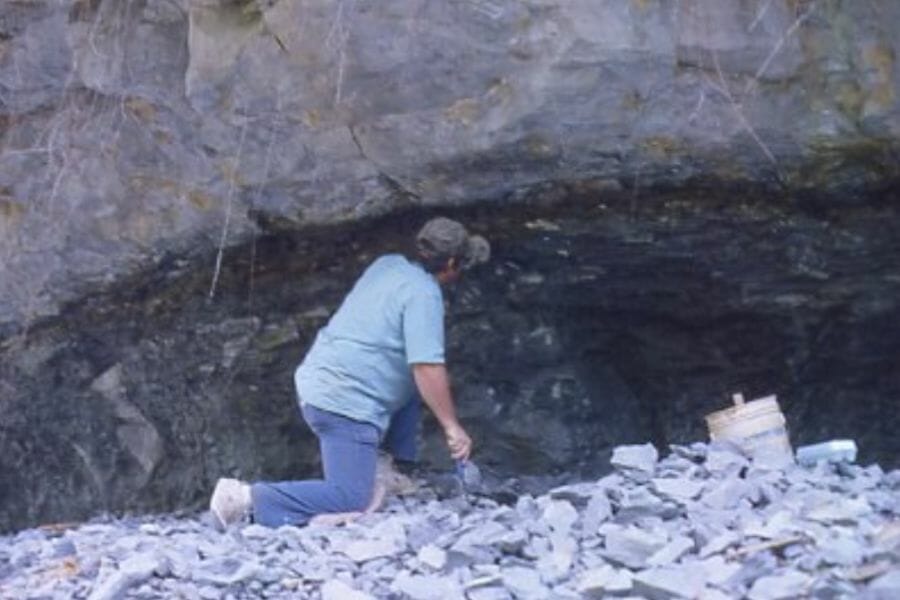
Lincoln Co., KY 40489, United States
The area is known for its rich deposits of quartz and other minerals, making it a great spot to look for gems. You can explore the area by foot or car or even take a guided tour to learn more about the area’s geology and history. Various tools are available to help you find gems, such as a rock hammer and chisels. With patience and luck, you may find some beautiful gems to take home with you!
The Types Of Gemstones Found At Halls Gap
This location is widely recognized for its abundance of the following gems:
- Barite
- Calcite
- Celestite
- Cerussite
- Chalcedony
- Dolomite
- Malachite
- Pyrite
- Quartz
The Best Time To Visit Halls Gap
The best time to visit Halls Gap is from April to October. During this time of year, there are typically fewer gem hunters in the area and it’s easier to find gems.
Columbia Mine
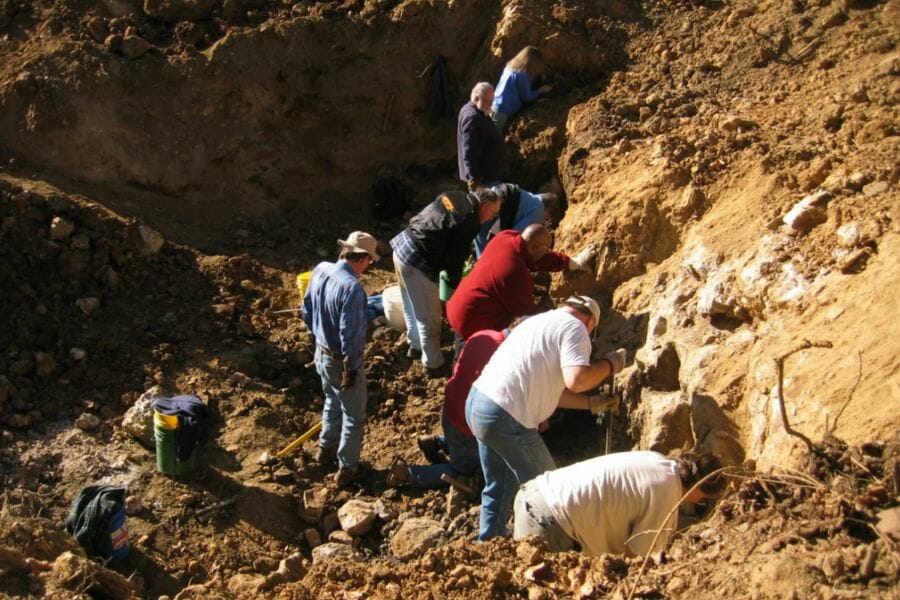
Marion, Crittenden Co., KY 42064, United States
Columbia Mine is home to various gems. Gem miners can purchase buckets of rough materials from which they can find their gems. You should bring buckets and other tools for sifting through the materials.
With our experience, this mine is a great place to explore the beauty of our state’s natural resources while having fun with family and friends!
The Types Of Gemstones Found At Columbia Mine
Over the years, this mine has produced many gemstones, some of which include:
- Cerussite
- Fluorite
- Quartz
- Smithsonite
- Sphalerite
The Best Time To Visit Columbia Mine
The peak season to dig gems at Columbia Mine is usually from May to August, when the weather is warm and dry, making it easier to mine for gems.
Little Big Gem Mine And Rock Shop – Great for kids
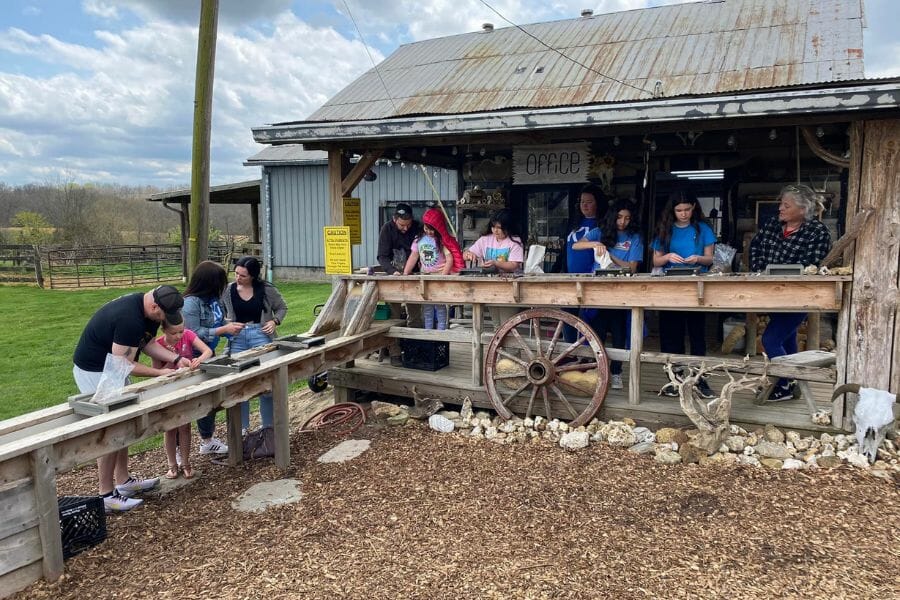
1000 KY-524, La Grange, KY 40031, United States
Little Big Gem Mine and Rock Shop is a unique experience for gem hunters. The shop carries various gems, minerals, fossils, jewelry, and other related items. You can hunt for gemstones in the mine or purchase them from the shop. The staff here is friendly and knowledgeable about geology and will help you identify your finds.
Little Big Gem Mine is a great place to find that unique item or to learn something new about rocks and gemstones!
The Types Of Gemstones Found At Little Big Gem Mine And Rock Shop
Children can learn a lot about many gemstones found at this spot, but it is particularly known to have the following gemstones:
- Amethyst
- Aquamarine
- Citrine
- Fluorite
- Garnet
- Moonstone
- Peridot
- Quartz
The Best Time To Visit Little Big Gem Mine And Rock Shop
The best time to visit Little Big Gem Mine and Rock Shop is during the spring months of April and May.
Cold River Mining Corporation – Great for kids
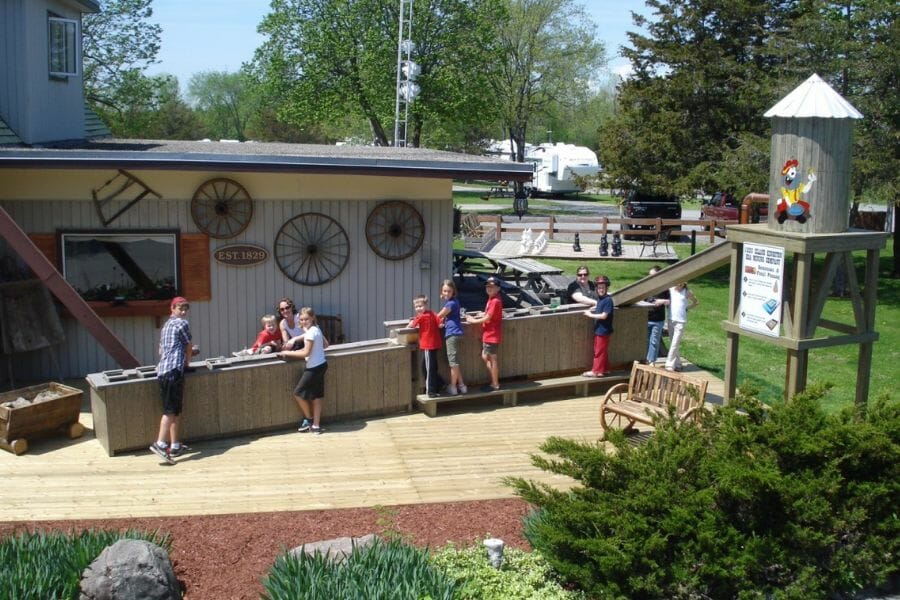
7432 Carrollton Rd, Campbellsburg, KY 40011, United States
Cold River Mining Corporation is a leading provider of quality gemstone paydirt, panning kits, and educational materials for gem hunters and hobbyists. Cold River Mining specializes in providing unique and educational experiences to those interested in exploring the world of gems and minerals. Their products are designed to be both educational and fun, allowing you to learn while you enjoy the exhilarating experience of discovering gems.
The Types Of Gemstones Found At Cold River Mining Corporation
Kids have mostly found the following gemstones in this area:
- Amethyst
- Aquamarine
- Citrine
- Garnet
- Peridot
- Topaz
- Tourmaline
The Best Time To Visit Cold River Mining Corporation
The best time to visit Cold River Mining Corporation is from April through October. The temperatures during these months are mild, and the weather is generally pleasant. This is also when they give guided tours of their area and hands-on mining experience.
Other Great Options For Real Gem Mining in Kentucky
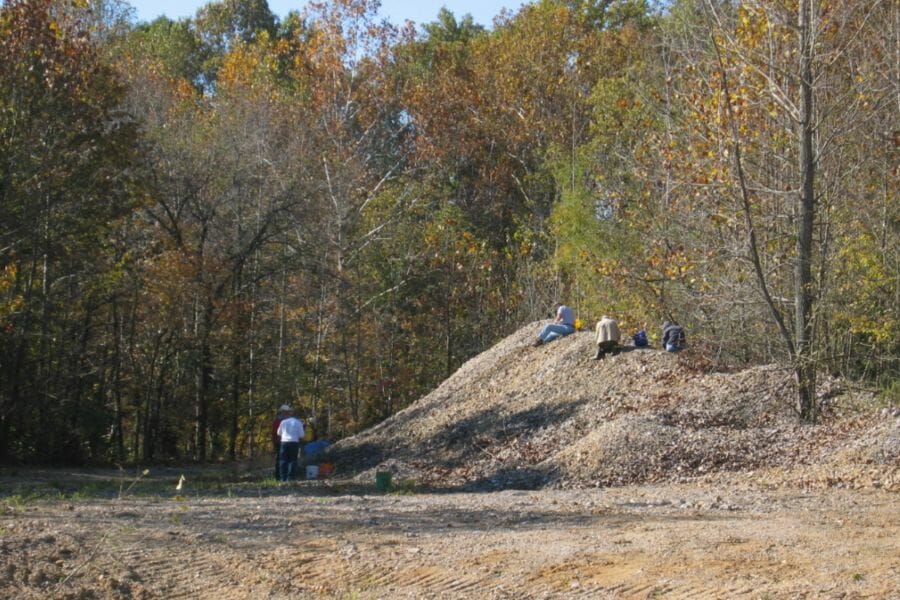
In Kentucky, there are more incredible locations to hunt for priceless gemstones. If you want to do real gem mining, here are a few more fantastic places you should explore, in addition to our favorites from the list above.
- Big Four Fault – Anglesite, Cerussite, Fluorite, Quartz, Smithsonite
- Eureka Mine – Fluorite, Quartz
- Ison Creek – Enstatite, Garnet, Mica, Serpentine
- Kings Mountain – Celestite, Quartz
- Kentucky Dam Village State Park – Quartz
- Kentucky Lake – Jasper, Quartz
- Kentucky River Bend – Agate, Barite, Calcite, Fluorite, Sphalerite
- Lafayette Mine – Fluorite, Hemimorphite, Quartz
- Little Sandy River – Apatite, Garnet, Chromite, Diopside, Feldspar, Quartz
- Mississippi River Valley – Freshwater pearls
- Mount Vernon (roadcuts and stream banks) – Garnet, Jasper
- Old Jim Mine – Hemimorphite, Pyrite, Smithsonite, Sphalerite
- Tennessee River Valley – Freshwater pearls
The Top Public Gem Mining Locations in Kentucky
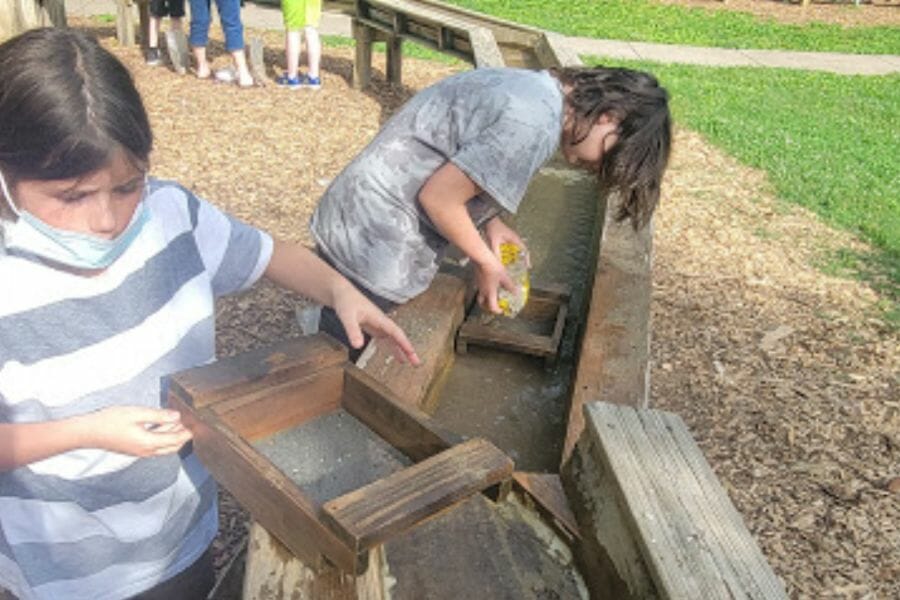
If you want to introduce your kids to the thrilling hobby of gem hunting, here are more of the greatest family-friendly public gem mining places that you and your kids will enjoy visiting.
- Big Mike’s Rock Shop – 566 Old Mammoth Cave Rd, Cave City, KY 42127, United States
- Carter Caves Gem Mine – 344 Caveland Dr, Olive Hill, KY 41164, United States
- Cumberland Falls Mining Company – 7351 KY-90, Corbin, KY 40701, United States
- Lost River Cave – 2818 Nashville Rd, Bowling Green, KY 42101, United States
Kentucky Gem Mining Laws And Regulations
The Kentucky Department of Fish and Wildlife Resources (KDFWR) regulates recreational gem hunting in the state. Gem hunting is allowed on any public land, including state and federal lands, provided that all applicable laws and regulations do it. The KDFWR also requires that anyone wishing to hunt for gems obtain a permit from the KDFWR.
Gem hunters must abide by all applicable laws and regulations when collecting gems. These include avoiding areas that are closed to public use or access, such as archaeological sites or areas containing endangered species; respecting private property; following all safety guidelines; refraining from removing more than a reasonable amount of material from a given area; and not disturbing wildlife or vegetation.
For more information about the state’s gem mining laws and regulations, visit the Kentucky Department of Fish and Wildlife Resources site we linked above.
Additional Places To Mine For Gems In Nearby States
If you’ve already tried all of our recommendations above or are planning a trip out of the state you should check out our guides for neighboring states:
- Gem Mining in Illinois
- Gem Mining in Indiana
- Gem Mining in Missouri
- Gem Mining in Ohio
- Gem Mining in Tennessee
- Gem Mining in Virginia
- Gem Mining in West Virginia
If you have any recommendations we haven’t covered please leave them in the comments below!

